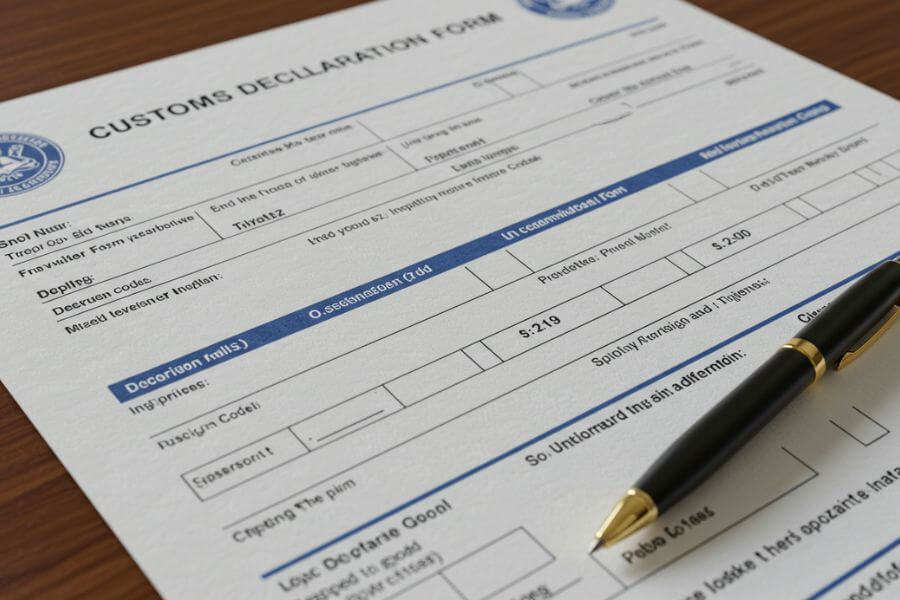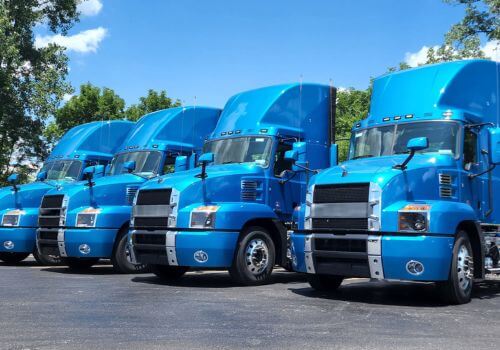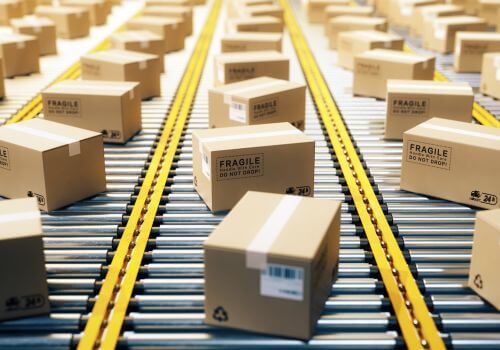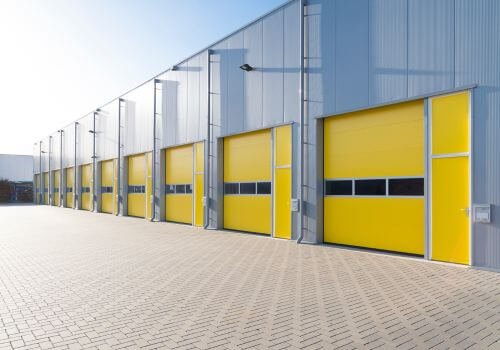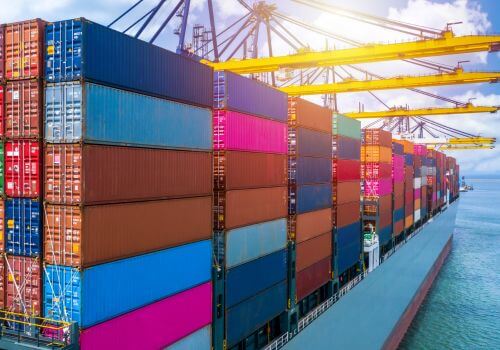Shipping goods internationally sounds exciting, but it comes with its own set of rules and paperwork. One of the most important documents you’ll encounter is the customs declaration form.
This guide will walk you through everything you need to know—from what these forms are, why they matter, how to fill them out, and tips to avoid common mistakes.
What is a customs declaration form?
A customs declaration form is an official document used when goods cross international borders. It tells customs authorities what’s inside your shipment, its value, where it’s coming from, and where it’s going. Think of it as a passport for your goods—it helps ensure your shipment is legal and meets all import/export regulations.
Its key purposes include:
- Legal compliance: Ensures your shipment follows the laws of both the exporting and importing countries.
- Tax assessment: Customs uses the form to calculate duties and taxes.
- Security: Helps authorities spot illegal or dangerous items.
- Statistical tracking: Governments use the data for trade statistics.
Why are customs declaration forms important in logistics?
Customs declaration forms might seem like just another piece of paperwork, but they play a huge role in making sure your shipment gets where it needs to go without problems. Here’s why they matter so much in logistics.
Avoiding delays and problems at the border
When your goods arrive in another country, customs officers need to know exactly what’s inside. If your shipment doesn’t have the right form, or if the information is missing or incorrect, customs can hold your package, send it back, or even confiscate it. Having a complete and accurate customs declaration helps your goods move smoothly and quickly through customs checks.
Calculating duties and taxes
Every country charges taxes (called duties) on imported goods. Customs declaration forms tell authorities how much your goods are worth and what they are, so they can calculate the correct amount of taxes you need to pay. If the information isn’t clear or accurate, you might end up paying too much, too little (which can cause legal trouble), or face unexpected fees.
Following the law
International shipping is full of rules and regulations. Customs declaration forms help you follow these laws by providing all the details customs officers need. This keeps your business out of legal trouble and helps avoid fines or penalties.
Building trust and reputation
If your shipments are always delayed or have issues at customs, customers and business partners may lose trust in your company. By getting the customs paperwork right every time, you show that you’re reliable and professional.
Keeping everyone safe
Customs uses declaration forms to spot dangerous or illegal items. By clearly listing what’s in your shipment, you help keep borders secure and make sure only safe, legal goods are transported.
Who needs to fill out a customs declaration form?
If you’re sending anything across international borders, chances are you’ll need to fill out a customs declaration form. It doesn’t matter if you’re a big company or just sending a gift to a friend overseas—customs wants to know what’s coming into or leaving the country.
Here’s who usually needs to complete a customs declaration form:
- Exporters: If you’re sending goods from your country to another—whether you’re a business or an individual—you’re responsible for declaring what’s in your shipment.
- Importers: If you’re on the receiving end, sometimes you’ll need to fill out a form or provide information to help clear your goods through customs.
- Online sellers and e-commerce businesses: Selling products to international customers? You’ll need to declare what you’re shipping, even if it’s just a single item.
- Freight forwarders and logistics companies: These professionals often handle customs paperwork on behalf of their clients, making sure everything is filled out correctly.
- Individuals sending gifts or personal items: Even if you’re just mailing a present or your own belongings to another country, a customs declaration is usually required.
In short, if your package is crossing a border, someone needs to fill out a customs declaration form. It’s a key step to make sure your shipment doesn’t get delayed, returned, or held up by customs officials. If you’re not sure whether you need to fill one out, it’s always best to ask your shipping provider or check the rules for your destination country.
What are the different types of customs declaration forms?
When it comes to shipping goods across borders, there isn’t just one “customs declaration form” that fits every situation. The form you need depends on where you’re shipping, what you’re sending, how much it’s worth, and how it’s being transported.
Let’s break down the most common types you’ll encounter in logistics.
CN22 and CN23 forms
These are the go-to forms for sending small packages and parcels through regular postal services (like your country’s post office).
- CN22: Used for packages with a lower value (usually under a certain amount, like $400).
- CN23: Used for higher-value parcels or when more details are needed.
Both forms ask for information like what’s inside the package, its value, and who’s sending and receiving it.
Commercial invoice
A commercial invoice is one of the most important documents in international shipping. It acts as a bill for the goods and also serves as a customs declaration for many shipments.
- It lists details like the buyer and seller, a description of the goods, their value, and where they were made.
- Most couriers and freight companies will ask for a commercial invoice for business shipments.
Single administrative document (SAD)
If you’re shipping goods into or out of the European Union, you’ll likely use the SAD, sometimes called the C88 in the UK.
- It’s a detailed form used for customs clearance in the EU.
- It’s required for both imports and exports and covers all the key shipment details.
Bill of entry/export declaration
Some countries, especially in Asia and Africa, use a Bill of Entry (for imports) or an Export Declaration (for exports).
- These forms are submitted to customs authorities to declare what’s coming in or going out of the country.
- They’re often required for larger shipments or commercial cargo.
Electronic customs forms
Many countries and shipping companies now let you fill out customs forms online.
- These digital forms are often required by express couriers (like FedEx, DHL, or UPS).
- They make the process faster and reduce the chance of mistakes.
So, which form do you need?
- Small, low-value parcels: CN22 or CN23
- Business shipments: Commercial invoice (sometimes along with other forms)
- Shipping to or from the EU: Single Administrative Document (SAD)
- Large or commercial shipments in certain countries: Bill of Entry or Export Declaration
- Using an express courier: Usually an online electronic form
What information do you need for a customs declaration form?
Filling out a customs declaration form might seem tricky at first, but it’s really just about providing clear, honest details about your shipment. Here’s a breakdown of the main information you’ll need.
Who's sending and who's receiving?
You’ll need to write down the names, addresses, and contact details of both the sender (that’s you or your company) and the recipient (the person or business getting the goods). Make sure this information is accurate—mistakes here can cause delivery issues.
What are you shipping?
Describe your items as clearly as possible. Instead of just saying “clothing,” for example, write “men’s cotton t-shirts.” The more specific you are, the easier it is for customs officers to understand what’s in your package.
How many and how heavy?
List the quantity of each item you’re sending (for example, “3 mugs” or “10 phone cases”) and the total weight of your shipment. This helps customs calculate any taxes or duties.
What's it worth?
Declare the value of your goods in your local currency. If you sold the items, use the sale price. If it’s a gift or a sample, estimate what it would cost to buy them. Don’t try to undervalue your shipment—customs can check, and it could cause problems.
Where were the goods made?
You’ll be asked for the “country of origin,” which means the country where your items were manufactured or produced. This is important for customs rules and trade agreements.
What's the product code?
Most customs forms require an HS Code (Harmonized System Code). This is a universal number used to classify products. You don’t need to memorize it—just look it up online or ask your shipping provider for help.
Why are you sending these items?
You’ll need to state the reason for your shipment. Is it a sale, a gift, a sample, or maybe a return? There’s usually a box to tick or a space to write a short explanation.
Signature and date
Finally, you’ll sign and date the form to confirm that all the information you’ve provided is true and complete.
7 frequently asked questions about customs declaration forms
Q1. Do I need a customs declaration form if I’m sending a gift?
A. Yes, you do. Even if you’re sending a gift to someone in another country, customs authorities need to know what’s inside the package and its value. Just mark the package as a “gift” on the form and give an honest estimate of what it’s worth.
Q2. What should I do if I make a mistake on the customs form?
A2. Mistakes happen! If you realize you’ve made an error after submitting the form, contact your shipping carrier or customs broker as soon as possible. They can help you correct the information before your package reaches customs, which can prevent delays or problems.
Q3. Can I put a lower value on my shipment to pay less tax?
A3. It might be tempting, but you should never declare a lower value than the real worth of your goods. This is against the law and can lead to fines, delays, or even having your shipment seized by customs. Always be honest about the value.
Q4. What is an HS Code, and how do I find the right one?
A4. An HS Code (Harmonized System Code) is a special number used worldwide to identify different types of products. It helps customs understand exactly what you’re shipping. You can find the correct HS Code by searching online, checking with your shipping company, or asking a customs expert.
Q5. What happens if I don’t fill out the customs declaration form correctly?
A5. If your form is incomplete or has mistakes, your shipment could be delayed, returned, or even confiscated by customs. You might also have to pay extra fees or fines. That’s why it’s important to double-check everything before you send your package.
Q6. Do I always need to fill out the form myself?
A6. Not always. If you’re using a shipping company, freight forwarder, or customs broker, they might fill out the form for you. However, you’re still responsible for making sure all the information is correct, so it’s good to understand what’s needed.
Q7. Is the customs declaration form the same in every country?
A7. No, the exact form and requirements can vary depending on where you’re shipping from and to. Some countries use their own forms, while others accept international forms like the CN22 or commercial invoices. Always check what’s needed for your specific shipment.
In summary, a Customs Declaration Form in logistics is an official document that provides detailed information about goods being imported or exported, helping customs authorities assess duties, ensure legal compliance, and control the movement of goods across international borders.

